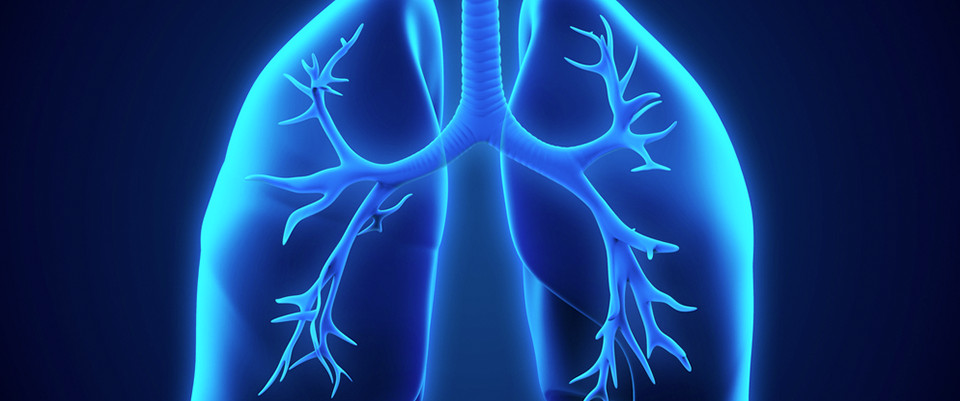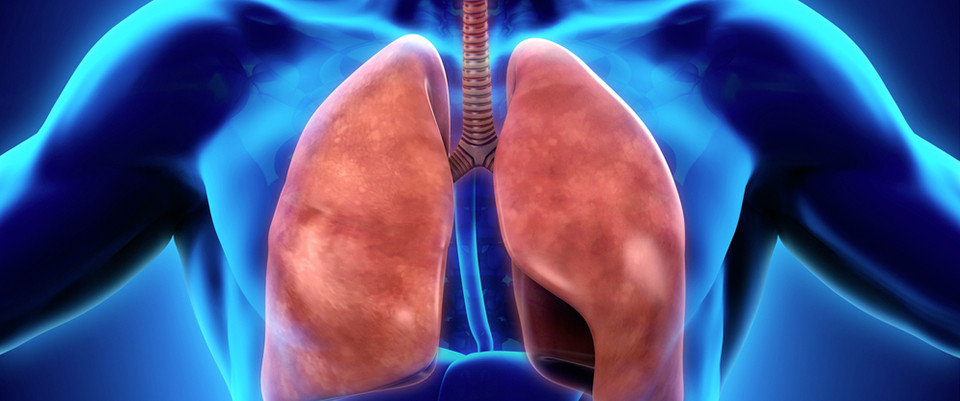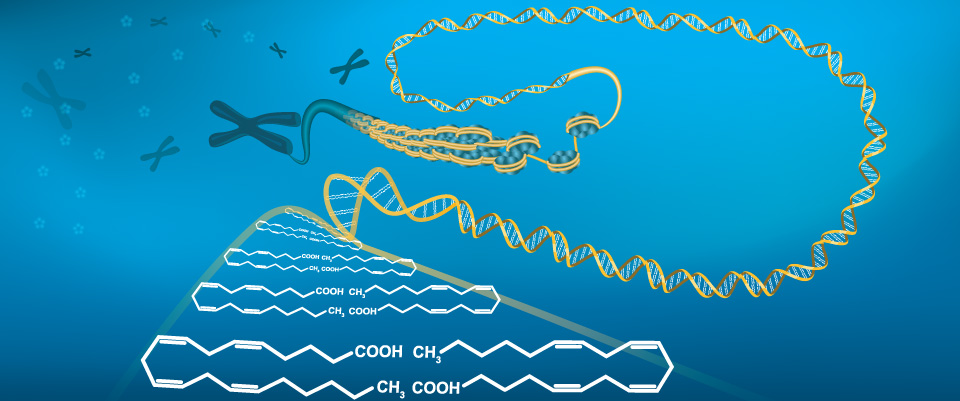PubMed
Metabolomics analysis of saliva from patients with primary Sjögren's syndrome.
Related Articles
Metabolomics analysis of saliva from patients with primary Sjögren's syndrome.
Clin Exp Immunol. 2015 Jul 21;
Authors: Kageyama G, Saegusa J, Irino Y, Tanaka S, Tsuda K, Takahashi S, Sendo S, Morinobu A
Abstract
INTRODUCTION: The recent development of salivary proteomics has led to the identification of potential biomarkers for diagnosing patients with primary Sjögren's syndrome (pSS). Here we sought to identify differentially produced salivary metabolites from pSS patients and healthy controls (HCs) that might be used to characterize this disease.
METHODS: We obtained salivary samples from 12 female pSS patients (mean age 44.2 ± 13.01) and 21 age-matched female HCs. The metabolite profiles of saliva were analyzed by gas chromatography-mass spectrometry. The total metabolite levels in each of the samples were calculated and compared across the study participants.
RESULTS: A total of 88 metabolites were detected across the study samples, 41 of which were observed at reduced levels in the samples from pSS patients. Principal component analysis (PCA) revealed a loss in salivary metabolite diversity in the pSS patient samples compared to the HC samples. The reduced presence of glycine, tyrosine, uric acid, and fucose, which may reflect salivary gland destruction due to chronic sialoadenitis, contributed to the loss of diversity. Comparative PCA of the pSS patients revealed the presence of two subpopulations based on their metabolite profiles, and these two subpopulations showed a significant difference in the prevalence of major salivary glanditis (p=0.014).
CONCLUSIONS: In this study, we found that the salivary metabolite profile of pSS patients was less diverse than that of HCs and that the metabolite profiles in pSS patients were affected by the presence of major salivary glanditis. This article is protected by copyright. All rights reserved.
PMID: 26201380 [PubMed - as supplied by publisher]
Proteomic characterization of the nucleolar linker histone H1 interaction network.
Related Articles
Proteomic characterization of the nucleolar linker histone H1 interaction network.
J Mol Biol. 2015 Jun 5;427(11):2056-71
Authors: Szerlong HJ, Herman JA, Krause CM, DeLuca JG, Skoultchi A, Winger QA, Prenni JE, Hansen JC
Abstract
To investigate the relationship between linker histone H1 and protein-protein interactions in the nucleolus, we used biochemical and proteomics approaches to characterize nucleoli purified from cultured human and mouse cells. Mass spectrometry identified 175 proteins in human T cell nucleolar extracts that bound to Sepharose-immobilized H1 in vitro. Gene ontology analysis found significant enrichment for H1 binding proteins with functions related to nucleolar chromatin structure and RNA polymerase I transcription regulation, rRNA processing, and mRNA splicing. Consistent with the affinity binding results, H1 existed in large (400 to >650kDa) macromolecular complexes in human T cell nucleolar extracts. To complement the biochemical experiments, we investigated the effects of in vivo H1 depletion on protein content and structural integrity of the nucleolus using the H1 triple isoform knockout (H1ΔTKO) mouse embryonic stem cell (mESC) model system. Proteomic profiling of purified wild-type mESC nucleoli identified a total of 613 proteins, only ~60% of which were detected in the H1 mutant nucleoli. Within the affected group, spectral counting analysis quantitated 135 specific nucleolar proteins whose levels were significantly altered in H1ΔTKO mESC. Importantly, the functions of the affected proteins in mESC closely overlapped with those of the human T cell nucleolar H1 binding proteins. Immunofluorescence microscopy of intact H1ΔTKO mESC demonstrated both a loss of nucleolar RNA content and altered nucleolar morphology resulting from in vivo H1 depletion. We conclude that H1 organizes and maintains an extensive protein-protein interaction network in the nucleolus required for nucleolar structure and integrity.
PMID: 25584861 [PubMed - indexed for MEDLINE]
High-dose simvastatin exhibits enhanced lipid-lowering effects relative to simvastatin/ezetimibe combination therapy.
Related Articles
High-dose simvastatin exhibits enhanced lipid-lowering effects relative to simvastatin/ezetimibe combination therapy.
Circ Cardiovasc Genet. 2014 Dec;7(6):955-64
Authors: Snowden SG, Grapov D, Settergren M, D'Alexandri FL, Haeggström JZ, Fiehn O, Hyötyläinen T, Pedersen TL, Newman JW, Orešič M, Pernow J, Wheelock CE
Abstract
Statins are the frontline in cholesterol reduction therapies; however, their use in combination with agents that possess complimentary mechanisms of action may achieve further reductions in low-density lipoprotein cholesterol. Thirty-nine patients were treated with either 80 mg simvastatin (n=20) or 10 mg simvastatin plus 10 mg ezetimibe (n=19) for 6 weeks. Dosing was designed to produce comparable low-density lipoprotein cholesterol reductions, while enabling assessment of potential simvastatin-associated pleiotropic effects. Baseline and post-treatment plasma were analyzed for lipid mediators (eg, eicosanoids and endocannabinoids) and structural lipids by liquid chromatography tandem mass spectrometry. After statistical analysis and orthogonal projections to latent structures multivariate modeling, no changes were observed in lipid mediator levels, whereas global structural lipids were reduced in response to both monotherapy (R(2)Y=0.74; Q(2)=0.66; cross-validated ANOVA P=7.0×10(-8)) and combination therapy (R(2)Y=0.67; Q(2)=0.54; cross-validated ANOVA P=2.6×10(-5)). Orthogonal projections to latent structures modeling identified a subset of 12 lipids that classified the 2 treatment groups after 6 weeks (R(2)Y=0.65; Q(2)=0.61; cross-validated ANOVA P=5.4×10(-8)). Decreases in the lipid species phosphatidylcholine (15:0/18:2) and hexosyl-ceramide (d18:1/24:0) were the strongest discriminators of low-density lipoprotein cholesterol reductions for both treatment groups (q<0.00005), whereas phosphatidylethanolamine (36:3e) contributed most to distinguishing treatment groups (q=0.017). Shifts in lipid composition were similar for high-dose simvastatin and simvastatin/ezetimibe combination therapy, but the magnitude of the reduction was linked to simvastatin dosage. Simvastatin therapy did not affect circulating levels of lipid mediators, suggesting that pleiotropic effects are not associated with eicosanoid production. Only high-dose simvastatin reduced the relative proportion of sphingomyelin and ceramide to phosphatidylcholine (q=0.008), suggesting a pleiotropic effect previously associated with a reduced risk of cardiovascular disease.
PMID: 25516625 [PubMed - indexed for MEDLINE]
Lipidomics: quest for molecular lipid biomarkers in cardiovascular disease.
Related Articles
Lipidomics: quest for molecular lipid biomarkers in cardiovascular disease.
Circ Cardiovasc Genet. 2014 Dec;7(6):941-54
Authors: Hinterwirth H, Stegemann C, Mayr M
Abstract
Lipidomics is the comprehensive analysis of molecular lipid species, including their quantitation and metabolic pathways. The huge diversity of native lipids and their modifications make lipidomic analyses challenging. The method of choice for sensitive detection and quantitation of molecular lipid species is mass spectrometry, either by direct infusion (shotgun lipidomics) or coupled with liquid chromatography. Although shotgun lipidomics allows for high-throughput analysis, low-abundant lipid species are not detected. Previous separation of lipid species by liquid chromatography increases ionization efficiency and is better suited for quantifying low abundant and isomeric lipid species. In this review, we will discuss the potential of lipidomics for cardiovascular research. To date, cardiovascular research predominantly focuses on the role of lipid classes rather than molecular entities. An in-depth knowledge about the molecular lipid species that contribute to the pathophysiology of cardiovascular diseases may provide better biomarkers and novel therapeutic targets for cardiovascular disease.
PMID: 25516624 [PubMed - indexed for MEDLINE]
Untargeted metabolomics in doping control: detection of new markers of testosterone misuse by ultra-high performance liquid chromatography coupled to high resolution mass spectrometry.
Untargeted metabolomics in doping control: detection of new markers of testosterone misuse by ultra-high performance liquid chromatography coupled to high resolution mass spectrometry.
Anal Chem. 2015 Jul 22;
Authors: Raro M, Ibáñez M, Gil R, Fabregat A, Tudela E, Deventer K, Ventura R, Segura J, Marcos J, Kotronoulas A, Joglar J, Farre M, Yang S, Xing Y, Van Eenoo P, Pitarch E, Hernández F, Sancho JV, Pozo OJ
Abstract
The use of untargeted metabolomics for the discovery of markers is a promising and virtually unexplored tool in the doping control field. Hybrid quadrupole time-of-flight (QTOF) and hybrid quadrupole Orbitrap (Q Exactive) mass spectrometers, coupled to ultra-high pressure liquid chromatography are excellent tools for this purpose. In the present work, QTOF and Q Exactive have been used to look for markers for testosterone cypionate misuse by means of untargeted metabolomics. Two different groups of urine samples were analyzed; collected before and after the intramuscular administration of testosterone cypionate. In order to avoid analyte losses in the sample treatment, samples were just two-fold diluted with water, and directly injected into the chromatographic system. Samples were analyzed in both positive and negative ionization modes. Data from both systems were treated under untargeted metabolomic strategies using XCMS application and multivariate analysis. Results from the two mass spectrometers differed in the number of detected features, but both led to the same potential marker for the particular testosterone ester misuse. The in-depth study of the MS and MS/MS behavior of this marker allowed for the establishment of 1-cyclopentenoylglycine as feasible structure. The putative structure was confirmed by comparison with synthesized material. This potential marker seems to come from the metabolism of the cypionic acid release after hydrolysis of the administered ester. Its suitability for doping control has been evaluated.
PMID: 26200763 [PubMed - as supplied by publisher]
Soybean Oil Is More Obesogenic and Diabetogenic than Coconut Oil and Fructose in Mouse: Potential Role for the Liver.
Soybean Oil Is More Obesogenic and Diabetogenic than Coconut Oil and Fructose in Mouse: Potential Role for the Liver.
PLoS One. 2015;10(7):e0132672
Authors: Deol P, Evans JR, Dhahbi J, Chellappa K, Han DS, Spindler S, Sladek FM
Abstract
The obesity epidemic in the U.S. has led to extensive research into potential contributing dietary factors, especially fat and fructose. Recently, increased consumption of soybean oil, which is rich in polyunsaturated fatty acids (PUFAs), has been proposed to play a causal role in the epidemic. Here, we designed a series of four isocaloric diets (HFD, SO-HFD, F-HFD, F-SO-HFD) to investigate the effects of saturated versus unsaturated fat, as well as fructose, on obesity and diabetes. C57/BL6 male mice fed a diet moderately high in fat from coconut oil and soybean oil (SO-HFD, 40% kcal total fat) showed statistically significant increases in weight gain, adiposity, diabetes, glucose intolerance and insulin resistance compared to mice on a diet consisting primarily of coconut oil (HFD). They also had fatty livers with hepatocyte ballooning and very large lipid droplets as well as shorter colonic crypt length. While the high fructose diet (F-HFD) did not cause as much obesity or diabetes as SO-HFD, it did cause rectal prolapse and a very fatty liver, but no balloon injury. The coconut oil diet (with or without fructose) increased spleen weight while fructose in the presence of soybean oil increased kidney weight. Metabolomics analysis of the liver showed an increased accumulation of PUFAs and their metabolites as well as γ-tocopherol, but a decrease in cholesterol in SO-HFD. Liver transcriptomics analysis revealed a global dysregulation of cytochrome P450 (Cyp) genes in SO-HFD versus HFD livers, most notably in the Cyp3a and Cyp2c families. Other genes involved in obesity (e.g., Cidec, Cd36), diabetes (Igfbp1), inflammation (Cd63), mitochondrial function (Pdk4) and cancer (H19) were also upregulated by the soybean oil diet. Taken together, our results indicate that in mice a diet high in soybean oil is more detrimental to metabolic health than a diet high in fructose or coconut oil.
PMID: 26200659 [PubMed - as supplied by publisher]
Comprehensive two-dimensional gas chromatography coupled with time-of-flight mass spectrometry reveals the correlation between chemical compounds in Japanese sake and its organoleptic properties.
Related Articles
Comprehensive two-dimensional gas chromatography coupled with time-of-flight mass spectrometry reveals the correlation between chemical compounds in Japanese sake and its organoleptic properties.
J Biosci Bioeng. 2015 Jul 18;
Authors: Takahashi K, Kabashima F, Tsuchiya F
Abstract
Japanese sake is a traditional alcoholic beverage composed of a wide variety of metabolites, which give it many types of tastes and flavors. Previously, we have reported that medium-chain fatty acids contribute to a fatty odor in sake (Takahashi, K., et al., J. Agric. Food Chem., 62, 8478-8485, 2014). In this study, we have reanalyzed the data obtained using two-dimensional gas chromatography coupled with time-of-flight mass spectrometry. The relationship between the chemical components in sake and specific organoleptic properties such as off-flavor and quality has been explored. This led to the identification of the type of chemical compounds present and an assessment of the numerous candidate compounds that correlate with such organoleptic properties in sake. This research provides important fundamental knowledge for the sake-brewing industry.
PMID: 26199225 [PubMed - as supplied by publisher]
Metabolite profiling of CHO cells: Molecular reflections of bioprocessing effectiveness.
Related Articles
Metabolite profiling of CHO cells: Molecular reflections of bioprocessing effectiveness.
Biotechnol J. 2015 Jul 14;
Authors: Sellick CA, Croxford AS, Maqsood AR, Stephens GM, Westerhoff HV, Goodacre R, Dickson AJ
Abstract
Whilst development of medium and feeds has provided major advances in recombinant protein production in CHO cell, the fundamental understanding is limited. We have applied metabolite profiling with established robust (GC-MS) analytics to define the molecular loci by which two yield-enhancing feeds improve recombinant antibody yields from a model GS-CHO cell line. With data across core metabolic pathways, that report on metabolism within several cellular compartments, these data identify key metabolites and events associated with increased cell survival and specific productivity of cells. Of particular importance, increased process efficiency was linked to the functional activity of the mitochondria, with the amount and time course of use/production of intermediates of the citric acid cycle, for uses such as lipid biosynthesis, precursor generation and energy production, providing direct indicators of cellular status with respect to productivity. The data provide clear association between specific cellular metabolic indicators and cell process efficiency, extending from prior indications of the relevance of lactate metabolic balance to other redox sinks (glycerol, sorbitol and threitol). The information, and its interpretation, identifies targets for engineering cell culture efficiency, either from genetic or environmental perspectives, and greater understanding of the significance of specific medium components towards overall CHO cell bioprocessing.
PMID: 26198903 [PubMed - as supplied by publisher]
Big Biomedical data as the key resource for discovery science.
Related Articles
Big Biomedical data as the key resource for discovery science.
J Am Med Inform Assoc. 2015 Jul 21;
Authors: Toga AW, Foster I, Kesselman C, Madduri R, Chard K, Deutsch EW, Price ND, Glusman G, Heavner BD, Dinov ID, Ames J, Van Horn J, Kramer R, Hood L
Abstract
Modern biomedical data collection is generating exponentially more data in a multitude of formats. This flood of complex data poses significant opportunities to discover and understand the critical interplay among such diverse domains as genomics, proteomics, metabolomics, and phenomics, including imaging, biometrics, and clinical data. The Big Data for Discovery Science Center is taking an "-ome to home" approach to discover linkages between these disparate data sources by mining existing databases of proteomic and genomic data, brain images, and clinical assessments. In support of this work, the authors developed new technological capabilities that make it easy for researchers to manage, aggregate, manipulate, integrate, and model large amounts of distributed data. Guided by biological domain expertise, the Center's computational resources and software will reveal relationships and patterns, aiding researchers in identifying biomarkers for the most confounding conditions and diseases, such as Parkinson's and Alzheimer's.
PMID: 26198305 [PubMed - as supplied by publisher]
Solutions for low and high accuracy mass spectrometric data matching. A data-driven annotation strategy in non-targeted metabolomics.
Solutions for low and high accuracy mass spectrometric data matching. A data-driven annotation strategy in non-targeted metabolomics.
Anal Chem. 2015 Jul 21;
Authors: Forcisi S, Moritz F, Lucio M, Lehmann R, Stefan N, Schmitt-Kopplin P
Abstract
Ultra High Pressure Liquid Chromatography coupled to mass spectrometry (UHPLC-MS) has become a widespread analytical technique in metabolomics investigations, however the benefit of high performance chromatographic separation is often blunted due to insufficient mass spectrometric accuracy. A strategy that allows for the matching of UHPLC-MS data to highly accurate Direct Infusion Electrospray Ionization (DI-ESI) Fourier Transform Ion Cyclotron Resonance / Mass Spectrometry (FT-ICR/MS) data is developed in this manuscript. Mass difference network (MDiN) based annotation of FT-ICR/MS data and matching to unique UHPLC-MS peaks enables the consecutive annotation of the chromatographic dataset. A direct comparison of experimental m/z values provided no basis for the matching of both platforms. The matching of annotation-based exact neutral masses finally enabled the integration of platform specific multivariate statistical evaluations, minimizing the danger to compare artifacts generated on either platform. The approach was developed on a Non-Alcoholic Fatty Liver disease (NAFLD) dataset.
PMID: 26197019 [PubMed - as supplied by publisher]
Headspace versus direct immersion solid phase microextraction in complex matrices: investigation of analyte behavior in multicomponent mixtures.
Headspace versus direct immersion solid phase microextraction in complex matrices: investigation of analyte behavior in multicomponent mixtures.
Anal Chem. 2015 Jul 21;
Authors: Gionfriddo E, Souza-Silva EA, Pawliszyn J
Abstract
This work aims to investigate the behavior of analytes in complex mixtures and matrices with the use of solid-phase microextraction (SPME). Various factors that influence analyte uptake such as coating chemistry, extraction mode, the physicochemical properties of analytes, and matrix complexity were considered. At first, an aqueous system containing analytes bearing different hydrophobicities, molecular weights and chemical functionalities was investigated by using commercially available liquid and solid porous coatings. The differences in the mass transfer mechanisms resulted in a more pronounced occurrence of coating saturation in headspace mode. Contrariwise direct immersion extraction minimizes the occurrence of artefacts related to coating saturation and provides enhanced extraction of polar compounds. In addition, matrix-compatible PDMS-modified solid coatings, characterized by a new morphology that avoids coating fouling, were compared to their non-modified analogous. The obtained results indicate that PDMS-modified coatings reduce artefacts associated with coating saturation, even in headspace mode. This factor, coupled to their matrix compatibility, make the use of direct SPME very practical as a quantification approach and the best choice for metabolomics studies where wide coverage is intended. To further understand the influence on analyte uptake on a system where additional interactions occur due to matrix components, ex vivo and in vivo sampling conditions were simulated using a starch matrix model, with the aim of mimicking plant-derived materials. Our results corroborate the fact that matrix handling can affect analyte/matrix equilibria, with consequent release of high concentrations of previously bound hydrophobic compounds, potentially leading to coating saturation. Direct immersion SPME limited the occurrence of the artefacts, which confirms the suitability of SPME for in vivo applications. These findings shed light into the implementation of in vivo SPME strategies in quantitative metabolomics studies of complex plant-based systems.
PMID: 26196654 [PubMed - as supplied by publisher]
Metabolomics: Applications and Promise in Mycobacterial Disease.
Metabolomics: Applications and Promise in Mycobacterial Disease.
Ann Am Thorac Soc. 2015 Jul 21;
Authors: Mirsaeidi M, Banoei MM, Winston BW, Schraufnagel DE
Abstract
Until recently, the study of mycobacterial diseases was trapped in culture-based technology that is more than a century old. The use of nucleic acid amplification is changing this, and powerful new technologies are on the horizon. Metabolomics, which is the study of sets of metabolites of both the bacteria and host, is being used to clarifying mechanisms of disease, and can identify changes leading to better diagnosis, treatment, and prognostication of mycobacterial diseases. Metabolomic profiles are arrays of biochemical products of genes in their environment. These complex patterns are biomarkers that can allow a more complete understanding of cell function, dysfunction, and perturbation than genomics or proteomics. Metabolomics could herald sweeping advances in personalized medicine and clinical trial design, but the challenges in metabolomics are also great. Measured metabolite concentrations vary with the timing within a condition, the intrinsic biology, the instruments, and the sample preparation. Metabolism profoundly changes with age, gender, variations in gut microbial flora, and lifestyle. Validation of biomarkers is complicated by measurement accuracy, selectivity, linearity, reproducibility, robustness, and limits of detection. The statistical challenges include analysis, interpretation, and description of the vast amount data generated. Despite these drawbacks, metabolomics provides a great opportunity and potential for understanding and managing mycobacterial diseases. .
PMID: 26196272 [PubMed - as supplied by publisher]
An Interactive Cluster Heat Map to Visualize and Explore Multidimensional Metabolomic Data.
Related Articles
An Interactive Cluster Heat Map to Visualize and Explore Multidimensional Metabolomic Data.
Metabolomics. 2015 Aug 1;11(4):1029-1034
Authors: Benton PH, Ivanisevic J, Rinehart D, Epstein A, Kurczy ME, Boska MD, Gendelman HE, Siuzdak G
Abstract
Heat maps are a commonly used visualization tool for metabolomic data where the relative abundance of ions detected in each sample is represented with color intensity. A limitation of applying heat maps to global metabolomic data, however, is the large number of ions that have to be displayed and the lack of information provided about important metabolomic parameters such as m/z and retention time. Here we address these challenges by introducing the interactive cluster heat map in the data-processing software XCMS Online. XCMS Online (xcmsonline.scripps.edu) is a cloud-based informatic platform designed to process, statistically evaluate, and visualize mass-spectrometry based metabolomic data. An interactive heat map is provided for all data processed by XCMS Online. The heat map is clickable, allowing users to zoom and explore specific metabolite metadata (EICs, Box-and-whisker plots, mass spectra) that are linked to the METLIN metabolite database. The utility of the XCMS interactive heat map is demonstrated on metabolomic data set generated from different anatomical regions of the mouse brain.
PMID: 26195918 [PubMed - as supplied by publisher]
Evaluation of steroidomics by liquid chromatography hyphenated to mass spectrometry as a powerful analytical strategy for measuring human steroid perturbations.
Related Articles
Evaluation of steroidomics by liquid chromatography hyphenated to mass spectrometry as a powerful analytical strategy for measuring human steroid perturbations.
J Chromatogr A. 2015 Jul 7;
Authors: Jeanneret F, Tonoli D, Rossier MF, Saugy M, Boccard J, Rudaz S
Abstract
This review presents the evolution of steroid analytical techniques, including gas chromatography coupled to mass spectrometry (GC-MS), immunoassay (IA) and targeted liquid chromatography coupled to mass spectrometry (LC-MS), and it evaluates the potential of extended steroid profiles by a metabolomics-based approach, namely steroidomics. Steroids regulate essential biological functions including growth and reproduction, and perturbations of the steroid homeostasis can generate serious physiological issues; therefore, specific and sensitive methods have been developed to measure steroid concentrations. GC-MS measuring several steroids simultaneously was considered the first historical standard method for analysis. Steroids were then quantified by immunoassay, allowing a higher throughput; however, major drawbacks included the measurement of a single compound instead of a panel and cross-reactivity reactions. Targeted LC-MS methods with selected reaction monitoring (SRM) were then introduced for quantifying a small steroid subset without the problems of cross-reactivity. The next step was the integration of metabolomic approaches in the context of steroid analyses. As metabolomics tends to identify and quantify all the metabolites (i.e., the metabolome) in a specific system, appropriate strategies were proposed for discovering new biomarkers. Steroidomics, defined as the untargeted analysis of the steroid content in a sample, was implemented in several fields, including doping analysis, clinical studies, in vivo or in vitro toxicology assays, and more. This review discusses the current analytical methods for assessing steroid changes and compares them to steroidomics. Steroids, their pathways, their implications in diseases and the biological matrices in which they are analysed will first be described. Then, the different analytical strategies will be presented with a focus on their ability to obtain relevant information on the steroid pattern. The future technical requirements for improving steroid analysis will also be presented.
PMID: 26195035 [PubMed - as supplied by publisher]
Metabolomics for characterization of gender differences in patients infected with dengue virus.
Related Articles
Metabolomics for characterization of gender differences in patients infected with dengue virus.
Asian Pac J Trop Med. 2015 Jun;8(6):451-6
Authors: Shahfiza N, Osman H, Hock TT, Shaari K, Abdel-Hamid AH
Abstract
OBJECTIVE: To determine the metabolic response associate with dengue infection based on human gender metabolic differences by means of (1)H NMR-spectrometry.
METHODS: The mid-stream urine collected from both male and female patients diagnosed with dengue fever at Penang General Hospital and fourty-three healthy individuals were analyzed with (1)H NMR spectroscopy, followed by chemometric multivariate analysis. NMR signals which highlighted in the OPLS-DA S-plot were further selected and identified using Human Metabolome Database, Chenomx Profiler.
RESULTS: The results pointed out that NMR urine profiling was able to capture human gender metabolic differences that are important for the distinction of classes of individuals of similar physiological conditions; infected with dengue. Distinct differences between dengue infected patients versus healthy individuals and subtle differences in male versus female infected with dengue were found to be related to the metabolism of amino acid and tricarboxylic acid intermediates cycle.
CONCLUSIONS: The (1)H NMR metabolomic investigation combined with appropriate algorithms and pattern recognition procedures, gave an evidence for the existence of distinct metabolic differentiation of individuals, according to their gender, modulates with the infection risk.
PMID: 26194829 [PubMed]
Metabolic Impacts of Using Nitrogen and Copper-Regulated Promoters to Regulate Gene Expression in Neurospora crassa.
Related Articles
Metabolic Impacts of Using Nitrogen and Copper-Regulated Promoters to Regulate Gene Expression in Neurospora crassa.
G3 (Bethesda). 2015 Jul 20;
Authors: Ouyang S, Beecher CN, Wang K, Larive CK, Borkovich KA
Abstract
The filamentous fungus Neurospora crassa is a long-studied eukaryotic microbial system amenable to heterologous expression of native and foreign proteins. However, relatively few highly tunable promoters have been developed for this species. In this study, we compare the tcu-1 and nit-6 promoters for controlled expression of a GFP reporter gene in N. crassa. Though the copper-regulated tcu-1 has been previously characterized, this is the first investigation exploring nitrogen-controlled nit-6 for expression of heterologous genes in N. crassa. We determined that fragments corresponding to 1.5 kb fragments upstream of the tcu-1 and nit-6 open reading frames are needed for optimal repression and expression of GFP mRNA and protein. nit-6 was repressed using concentrations of glutamine from 2-20 mM and induced in medium containing 0.5-20 mM nitrate as the nitrogen source. Highest levels of expression were achieved within 3 hours of induction for each promoter and GFP mRNA could not be detected within an hour after transfer to repressing conditions using the nit-6 promoter. We also performed metabolic profiling experiments using proton NMR to identify changes in metabolite levels under inducing and repressing conditions for each promoter. The results demonstrate that conditions used to regulate tcu-1 do not significantly change the primary metabolome and that the differences between inducing and repressing conditions for nit-6 can be accounted for by growth under nitrate or glutamine as a nitrogen source. Our findings demonstrate that nit-6 is a tunable promoter that joins tcu-1 as a choice for regulation of gene expression in N. crassa.
PMID: 26194204 [PubMed - as supplied by publisher]
Efficient searching and annotation of metabolic networks using chemical similarity.
Related Articles
Efficient searching and annotation of metabolic networks using chemical similarity.
Bioinformatics. 2015 Apr 1;31(7):1016-24
Authors: Pertusi DA, Stine AE, Broadbelt LJ, Tyo KE
Abstract
MOTIVATION: The urgent need for efficient and sustainable biological production of fuels and high-value chemicals has elicited a wave of in silico techniques for identifying promising novel pathways to these compounds in large putative metabolic networks. To date, these approaches have primarily used general graph search algorithms, which are prohibitively slow as putative metabolic networks may exceed 1 million compounds. To alleviate this limitation, we report two methods--SimIndex (SI) and SimZyme--which use chemical similarity of 2D chemical fingerprints to efficiently navigate large metabolic networks and propose enzymatic connections between the constituent nodes. We also report a Byers-Waterman type pathway search algorithm for further paring down pertinent networks.
RESULTS: Benchmarking tests run with SI show it can reduce the number of nodes visited in searching a putative network by 100-fold with a computational time improvement of up to 10(5)-fold. Subsequent Byers-Waterman search application further reduces the number of nodes searched by up to 100-fold, while SimZyme demonstrates ∼ 90% accuracy in matching query substrates with enzymes. Using these modules, we have designed and annotated an alternative to the methylerythritol phosphate pathway to produce isopentenyl pyrophosphate with more favorable thermodynamics than the native pathway. These algorithms will have a significant impact on our ability to use large metabolic networks that lack annotation of promiscuous reactions.
AVAILABILITY AND IMPLEMENTATION: Python files will be available for download at http://tyolab.northwestern.edu/tools/.
SUPPLEMENTARY INFORMATION: Supplementary data are available at Bioinformatics online.
PMID: 25417203 [PubMed - indexed for MEDLINE]
Comparison of metabolomic profiles of microbial communities between stable and deteriorated methanogenic processes.
Related Articles
Comparison of metabolomic profiles of microbial communities between stable and deteriorated methanogenic processes.
Bioresour Technol. 2014 Nov;172:83-90
Authors: Sasaki D, Sasaki K, Tsuge Y, Morita M, Kondo A
Abstract
Central metabolite profiles from glucose in microbial communities during methanogenic process were compared between a stable methanogenic reactor (MR) and a deteriorated reactor (DR). The concentrations of intracellular metabolites related to the Embden-Meyerhof and pentose phosphate pathways, with the exception of pyruvate, remained high in the MR, showing increased carbon flux in the glycolysis pathway during stable methanogenesis. Extracellular acetate temporarily accumulated in the MR, consistent with higher ATP level in the MR. Intracellular concentrations of the intermediates in the reductive branch of tricarboxylic acid cycle, malate, fumarate, and succinate were higher in the DR. Low NADH/NAD(+) ratio both in the MR and DR would suggest NADH consumption during acetate and lactate/succinate production in the MR and DR, respectively. Intracellular glutamate levels were higher in the MR, correlating with lower NADPH/NADP(+) ratio concentrations in the MR. These findings contribute to a better understanding of the metabolic state during stable methanogenesis.
PMID: 25237777 [PubMed - indexed for MEDLINE]
Comparative evaluation of extraction methods for simultaneous mass-spectrometric analysis of complex lipids and primary metabolites from human blood plasma.
Related Articles
Comparative evaluation of extraction methods for simultaneous mass-spectrometric analysis of complex lipids and primary metabolites from human blood plasma.
Anal Bioanal Chem. 2014 Nov;406(28):7275-86
Authors: Lee do Y, Kind T, Yoon YR, Fiehn O, Liu KH
Abstract
Metabolomic results on human blood plasma largely depend on the sample preparation protocols employed for protein precipitation and metabolite extraction. Five different extraction methods were examined, which can be grouped into two categories, liquid-liquid extraction and protein precipitation methods, including long-standing protocols such as the Folch extraction and Bligh-Dyer extraction in comparison to modern methods such as the Matyash protocol and two global metabolite extraction methods. Extracts were subjected to analysis of blood plasma lipids and primary metabolites by using chip-based direct infusion nanoelectrospray tandem mass spectrometry and gas chromatography coupled to time-of-flight mass spectrometry, respectively. Optimal extraction schemes were evaluated based on the number of identified metabolites, extraction efficiency, compound diversity, reproducibility, and convenience for high-throughput sample preparations. Results showed that Folch and Matyash methods were equally valid and robust for lipidomic assessments while primary metabolites were better assessed by the protein precipitation methods with organic solvent mixtures.
PMID: 25171832 [PubMed - indexed for MEDLINE]
Metabolomic analysis of amino acid and fat metabolism in rats with L-tryptophan supplementation.
Related Articles
Metabolomic analysis of amino acid and fat metabolism in rats with L-tryptophan supplementation.
Amino Acids. 2014 Dec;46(12):2681-91
Authors: Ruan Z, Yang Y, Wen Y, Zhou Y, Fu X, Ding S, Liu G, Yao K, Wu X, Deng Z, Wu G, Yin Y
Abstract
Tryptophan (TRP) is an important precursor for several neurotransmitters and metabolic regulators, which play a vital role in regulating nutrient metabolism. The purpose of this study was to investigate the effects of tryptophan supplementation on the biochemical profiles, intestinal structure, liver structure and serum metabolome in rats. Rats received daily intragastric administration of either tryptophan at doses of 200 mg/kg body weight per day or saline (control group) for 7 days. TRP supplementation had a tendency to decrease the body weight of rats (P > 0.05). The levels of urea and CHO in serum were decreased in the TRP-supplemented group rats compared with control group rats (P < 0.05). TRP supplementation increased the villus height and the ratio of villus height to crypt depth in the jejunum compared to control group rats (P < 0.05). Metabolic effects of tryptophan supplementation include: (1) increases in the serum concentrations of lysine, glycine, alanine, glutamate, glutamine, citrulline, methionine, tyrosine, 1-methylhistidine, and albumin, and decreases in the concentrations of serum branched-chain amino acid (isoleucine, valine and leucine); (2) decreases in the serum concentrations of formate and nitrogenous products (trimethylamine, TMAO, methylamine and dimethylamine), and in the contraction of trimethylamine in feces; (3) decreases in serum levels of lipids, low density lipoprotein, very low density lipoprotein, together with the elevated ratio of acetoacetate to β-hydroxybutyrate. The results indicate that tryptophan supplementation reduced the catabolism of dietary amino acids and promoted protein synthesis in rats, promoted the oxidation of fatty acid and reduced fat deposition in the body of rats.
PMID: 25139634 [PubMed - indexed for MEDLINE]











